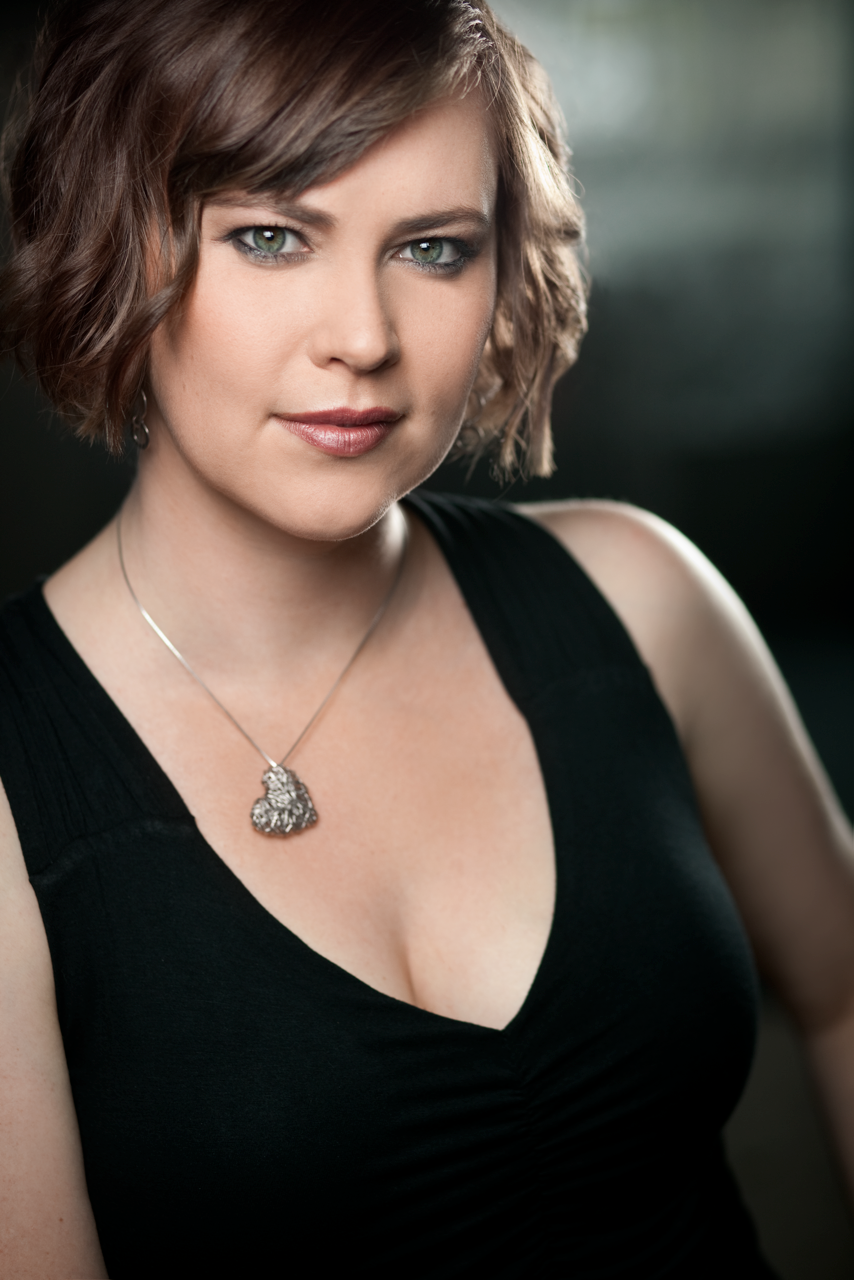|
Back
Engaging, confounding Toronto
Tank House Theatre
12/07/2011 -
Sofia Gubaidulina: Galgenlieder à 3
Betty Waynne Allison (Soprano), Ryan Scott (Percussion), Joseph Phillips (Double Bass)
Dáirine Ní Mheadhra (Conductor) 
B. W. Allison (© Kevin Clark)
Here was something completely different.
Russian composer Sofia Gubaidulina composed the Galgenlieder à 3 ("Gallows Songs for Three") in 1996. The strange title comes from that of a poetry collection (published 1905) by the German writer Christian Morgenstern (1871-1914), whose nonsense rhymes are reminiscent of Lewis Carroll or Edward Lear. (She also set 14 of the poems in Galgenlieder à 5 for mezzo-soprano and four instrumentalists.)
The presenter was Queen of Puddings Music Theatre, who usually present new works they have commissioned. This performance leads off a series called New Voices, the new voice being that of Betty Waynne Allison, a young singer who recently performed the title role in a new opera, Mary’s Wedding, in Victoria, BC, and is soon to take on the title role in Floyd’s Susannah in Milwaukee.
The venue is one of Toronto’s many old industrial spaces (in this case a 19th-century distillery) given re-use. It seats about 80 (and had a full house for this performance).
One expects that a cycle such as this would have the texts of the poems set to musical accompaniment. However, only nine of them received such conventional treatment. The 45-minute piece unfolds as follows (with the English titles of the poems):
1. “The Midnight Mouse”: the whimsical, childlike rhymes are accompanied by the percussionist who discreetly employs an impressivequite the battery of instruments.
2. “Reflection”: no words at all, just the percussionist (on marimba) and the double bass.
3. “The Aesthetic Weasel”: the singer is accompanied by the double bass using its highest register.
4. “The Knee”: this is an effectively creepy song about a disembodied knee, survivor of a battle, that roams the earth. There are vocal leaps accompanied by ominous sounds from kettle drums and the bass.
5. “Play I”: No words once again, but an intense vocalise accompanied by marimba.
6. “Play II”: This is just for the instruments once again, especially the bass used (by both players) in a percussive way.
7. “The Worm’s Confession”: an account of a worm living inside a mussel, delivered with high-toned declamation.
8. “Improvisation”: again wordless, this is a warm-sounding, melancholy piece for marimba and bass. The music is not improvised.
9. “The Dance”: this tells of a pig and an owl dancing together. (Shades of Edward Lear’s The Owl and the Pussycat.) There is considerable rhythmic complexity and it builds to quite a climax.
10. “The Prayer”: Does (i.e., female deer) meditate in the night.
11.” The Banquet of the Rake”: Profoundly nonsensical. The ultra-serious delivery of both this and the preceding song reminds one of Anna Russell’s lieder send-up.
12. “Psalm”: once again for the instruments only, with tenuous sounds from the bass in high register and very discreet percussion.
13. “Nocturnal Song of a Fish”: this is totally silent but a performance is mimed, with the conductor conducting, the singer (her mouth forming an “O”) responding, the bass player moving his bow but not touching the strings, the percussionist brandishing a mallet. It lasts about two minutes. The printed score looks very strange.
14. “Nay!”: this involves a snail, an owl, and a storm. The title’s gallows are finally mentioned. Anguished sounding. (How funny is this supposed to be?)
15. “The Moonsheep”: recounts the death of a cosmological sheep.
It is hard to know what to make of all this. One expects a flippant or jazzy treatment of such playful, even surreal, texts but instead it’s like a performance of Mahler’s Der Abschied. The variety in the music is engaging, and Ms Allison, a woman of enviable poise, has a lovely rich voice. Dáirine Ní Mheadhra conducted only the trickiest sections of the piece. Translations of the nine sung poems were projected and I rather wish the other six non-verbalized poems were as well. Just what was that fish trying to tell us?
In any case it was an antidote to the Messiahs currently inundating the city.
Michael Johnson
|